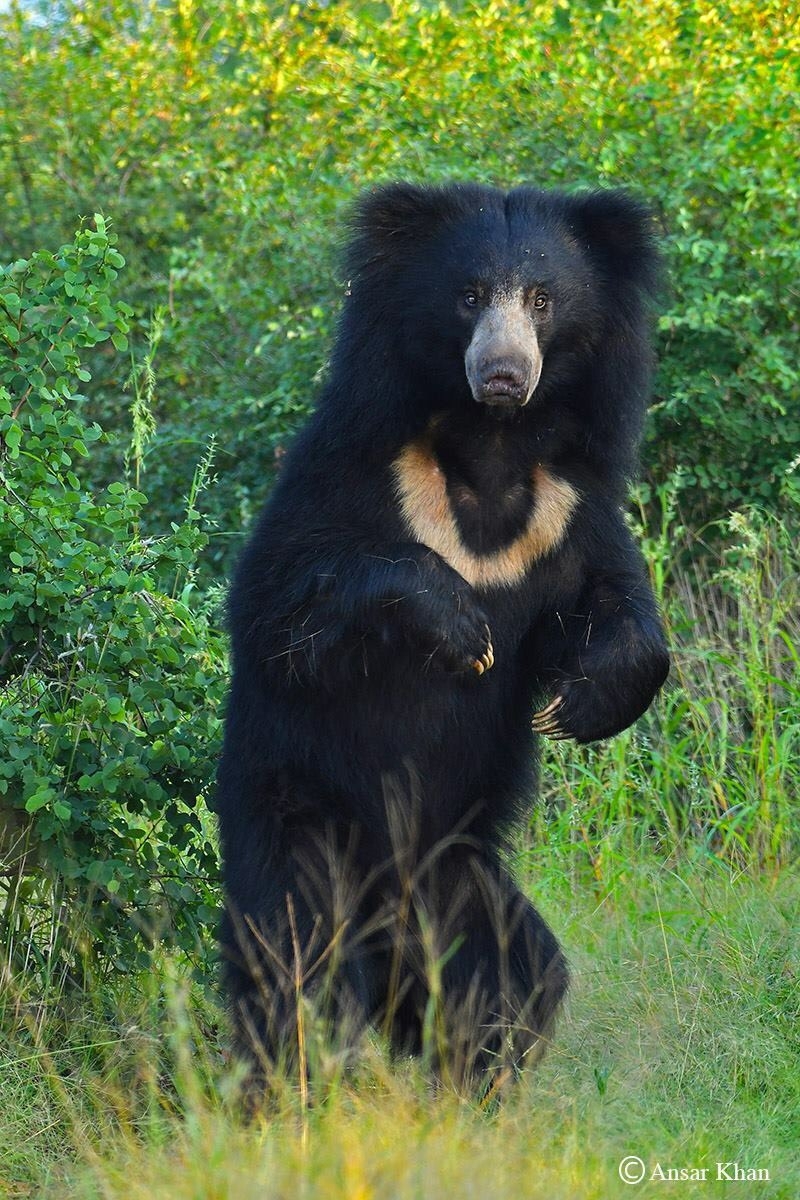
Sloth bear_M ursinus_central India_Ansar Khan
Melursus ursinus
This species is restricted to the Indian subcontinent, with no fossil or historic evidence anywhere else. It’s range is constrained by the availability of termites, which constitute a principal food throughout its range. The reliance on termites led to a number of morphological adaptations unique to this bear. One peculiar aspect of sloth bears is that they spend most of their time with their head down sniffing the ground, so often seem unaware of their surroundings. As a consequence, tigers can often approach them at close range, and as a consequence of this, sloth bears typically react to a nearby tiger with explosive aggression. They also react this same way to people, which results in more sloth bear-caused human injuries than with any other bear species. People thus fear this bear, and that fear causes many to be killed. Another principal threat is the decline in the area and quality of habitat commensurate with the growth of human populations.
Taxonomy: Melursus ursinus [Shaw, 1791]: The sloth bear was initially misclassified in the genus Bradypus as it was thought to be related to South American sloths, and was even referred to as the “bear-like sloth”. [See separate page: Discovering and Naming Bear Species for Science.] This is because sloths lack any front teeth, and sloth bears (unlike other bears) lack the middle two upper incisors (although they have 10 total incisors). Also like sloths, sloth bears have long, shaggy coats and long front claws. However, assertions that sloth bears are slow-moving and hang upside-down on tree limbs like sloths are false.
Today, debate persists as to whether this species should be in the mono-specific genus Melursus, or in Ursus (the same debate being true of sun bears). The name Melursus means honey bear, highlighting this species propensity to climb trees to consume honey and larvae in bees’ nests. Two subspecies have been recognized and are genetically distinct. Melursus ursinus inornatus only occurs on the island of Sri Lanka and is physically smaller with shorter and sparser hair than the mainland form, M. u. ursinus.
Distinctive characteristics: A medium-sized black-colored bear with a distinctively long shaggy, ‘disheveled’ coat, lacking underfur. Often, in camera trap photos, there is debris (leaves or grass) stuck to the coat; if present, this is a defining characteristic. Similar to Asiatic black bears, sloth bears normally have a crescent white mark on their chest and a long ruff of hair around their neck. These similar physical characteristics make it easy to confuse the two species. However, sloth bears have a notably long and light-colored muzzle, with the white color extending to near their eyes. Their muzzle is easily distinguished from the shorter, darker muzzle of Asiatic black bears. Sloth bears ears are small and often covered by their long hair, another good distinguishing feature compared to the large ‘Mikey Mouse’ ears of Asiatic black bears. Sloth bears have long, straight or slightly-curved, typically ivory-colored front claws, compared to the shorter, rounded claws of Asiatic black bears. Their long front claws facilitate digging for insects but encumbers climbing. Sloth bears are the only bear species lacking the typical middle two upper incisors (all other bears have 6), and this lack of middle incisors creates a gap that facilitates sucking in insects. Sloth bears also have extended ‘pouty’ lips to enhance sucking of termites, and can voluntarily close their nostrils to prevent breathing in dirt and debris.
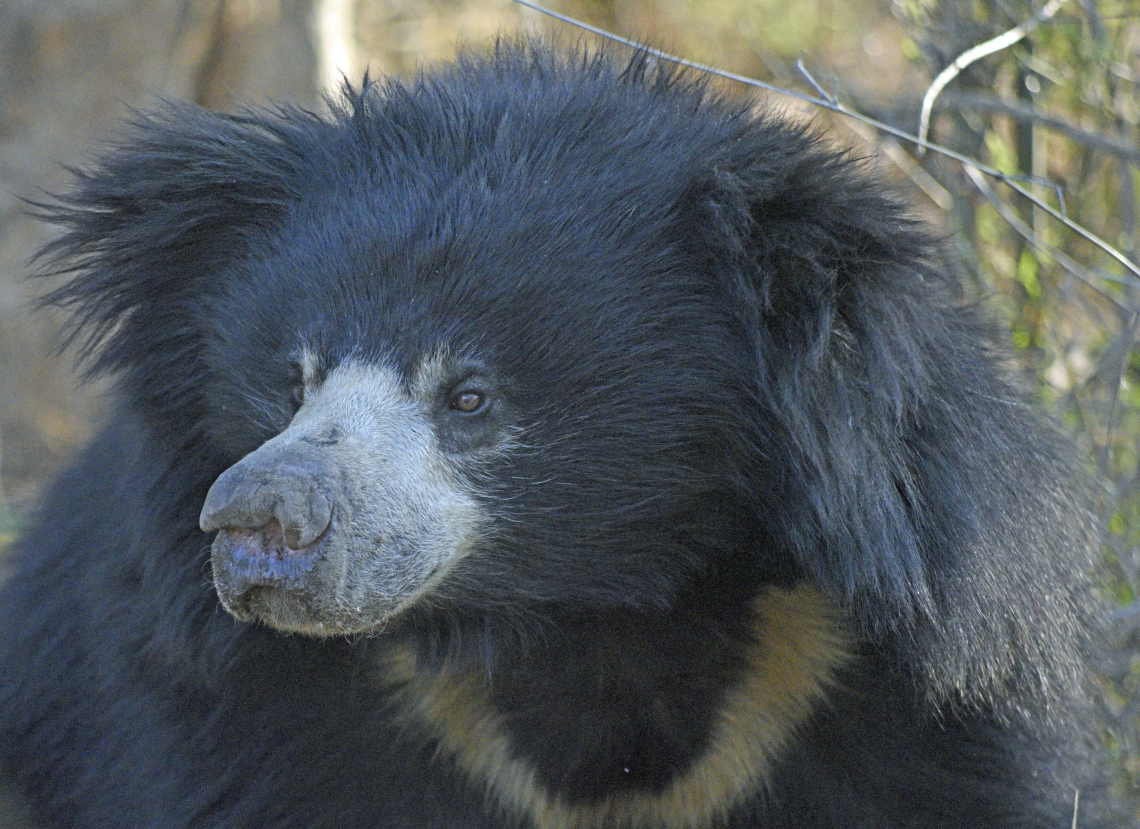
Sloth bear_M ursinus_WSOS Bannerghatta Bear Rescue Facility India_face and chest_T Sharp WSOS
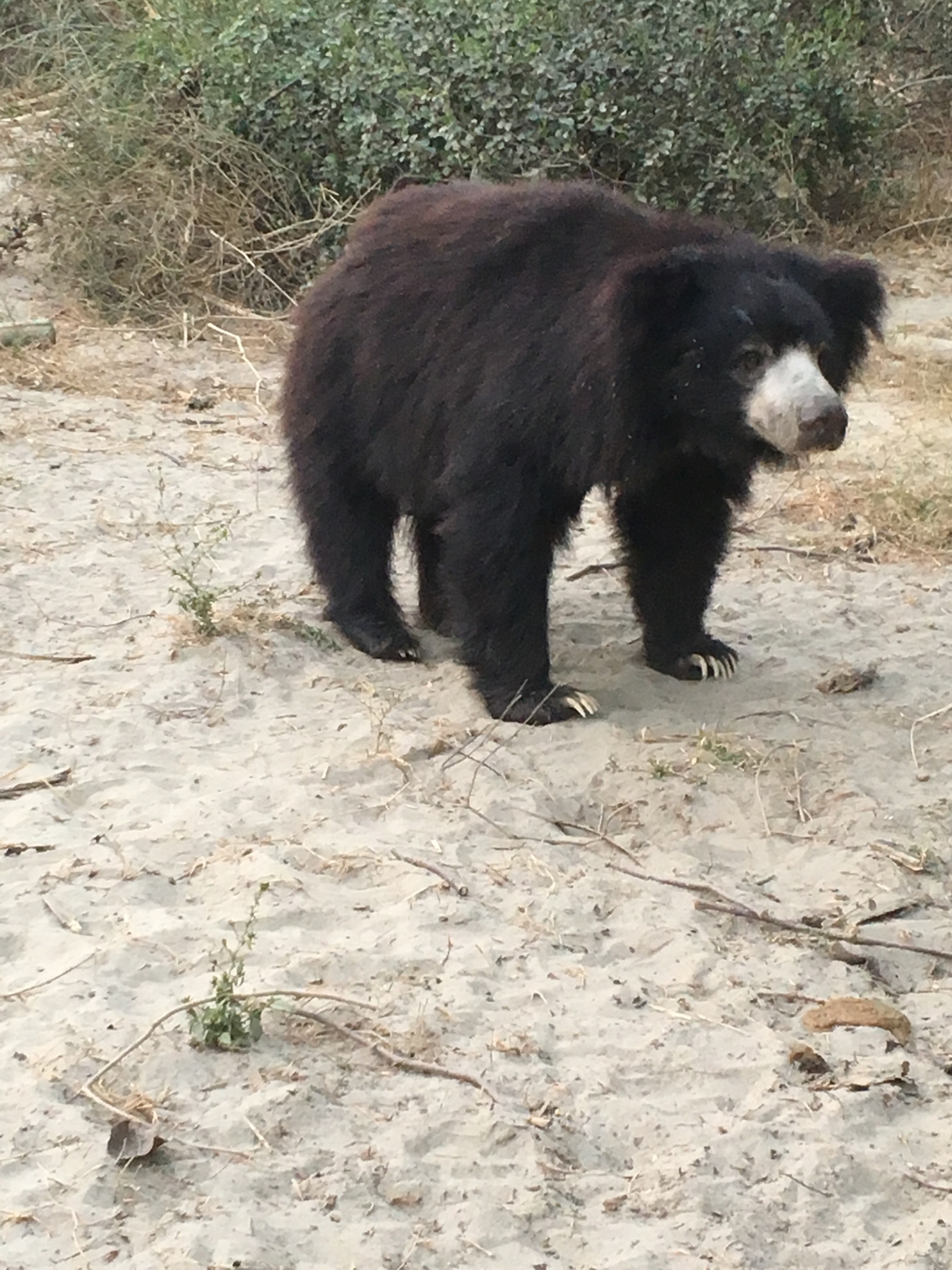
Sloth bear_M ursinus_WSOS Rescue Center Agra India_full body_D Garshelis
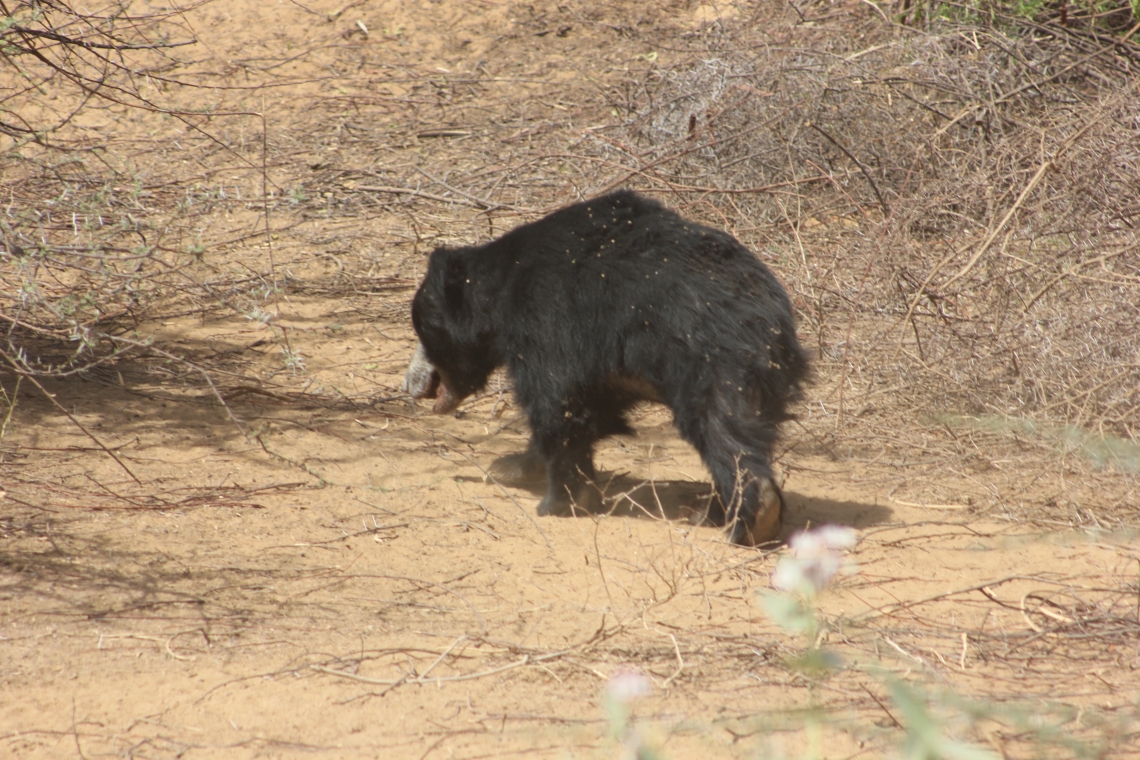
Sloth bear_M ursinus_Gujarat India_debris on coat_N Dharaiya
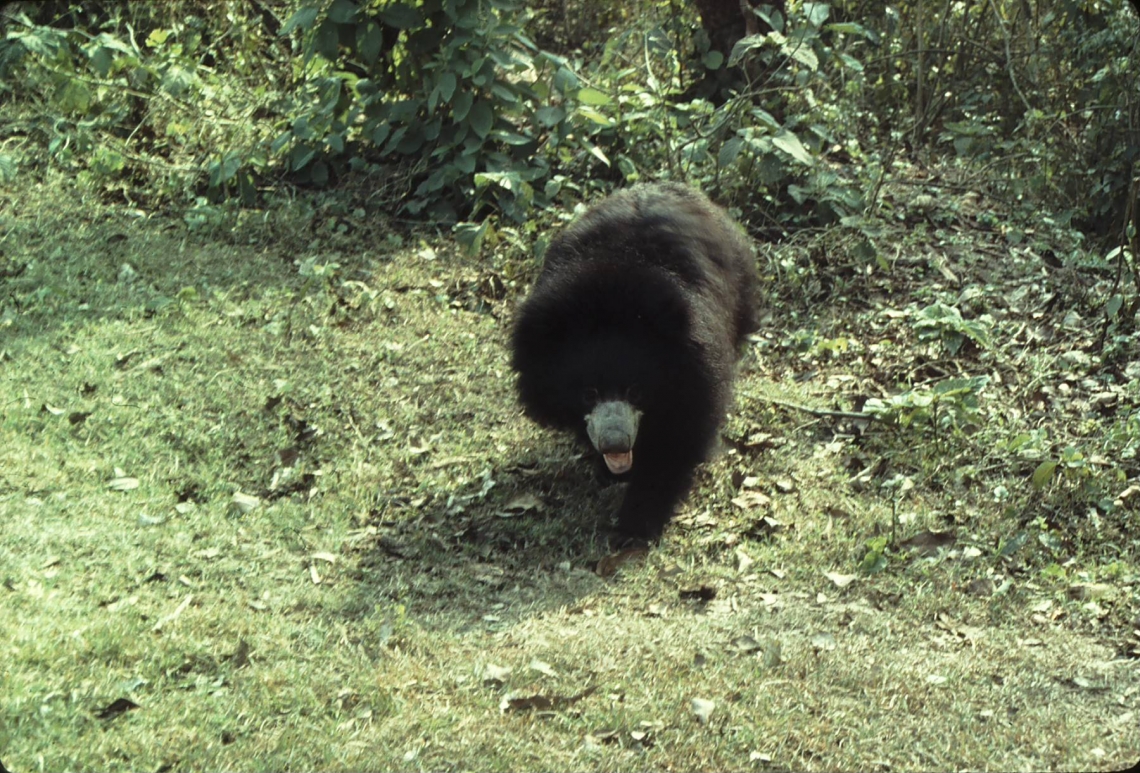
Sloth bear_M ursinus_Chitwan Nepal_distinctive white muzzle_D Garshelis
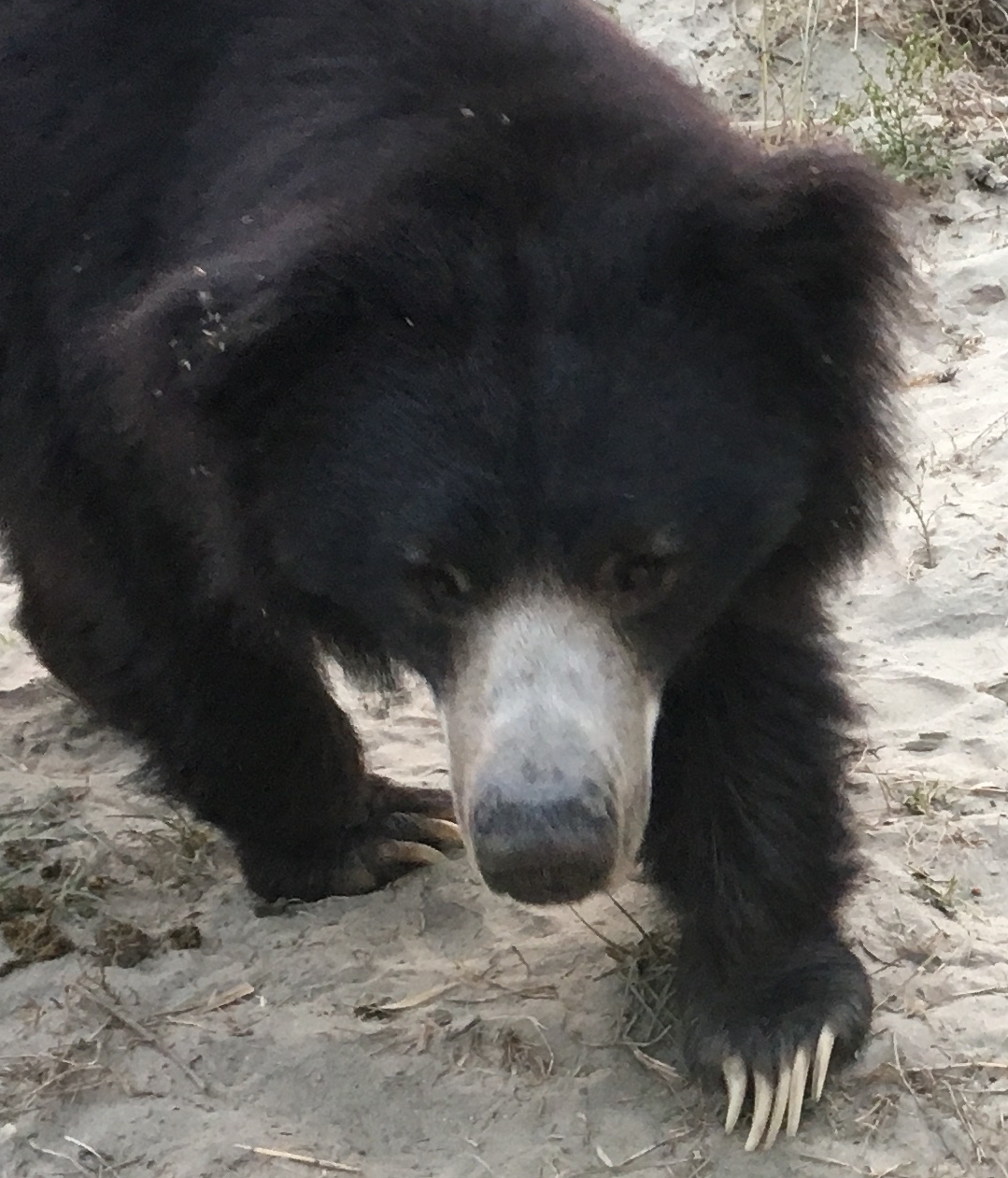
Sloth bear_M ursinus_WSOS Rescue Center Agra India_white muzzle and claws_D Garshelis
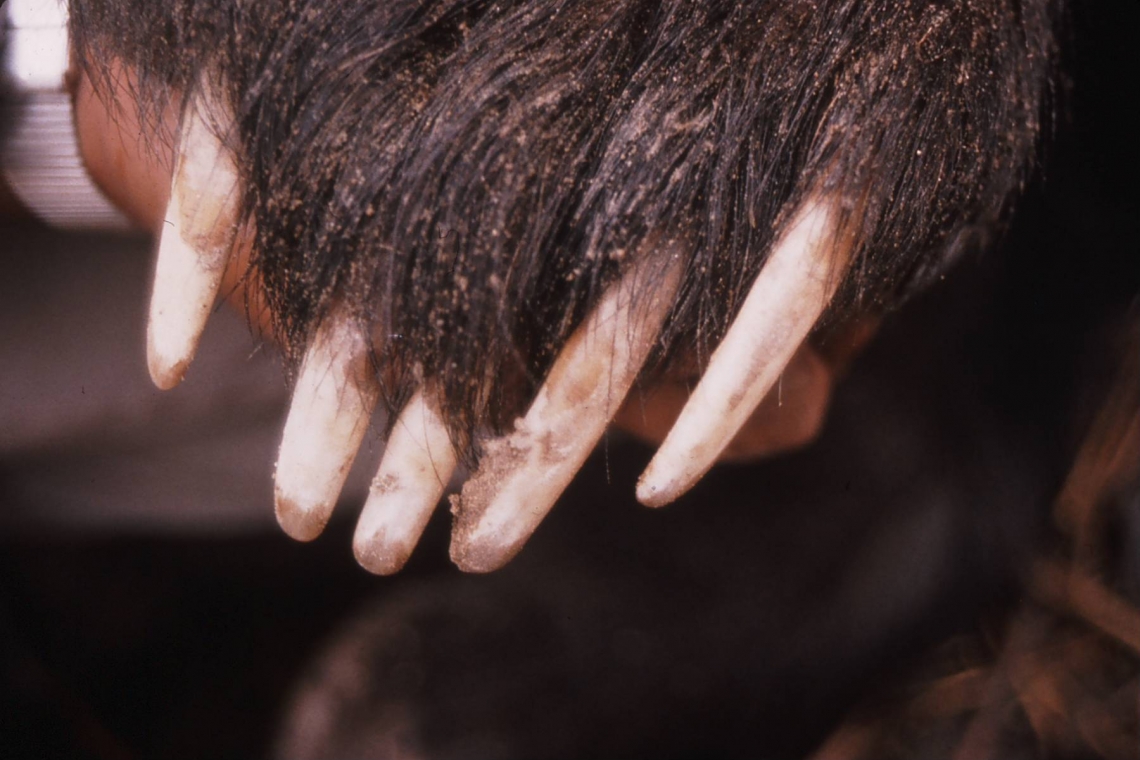
Sloth bear_M ursinus_Nepal_straight front claws_D Garshelis

Sloth bear_M ursinus_Chitwan Nepal_front foot pad_D Garshelis
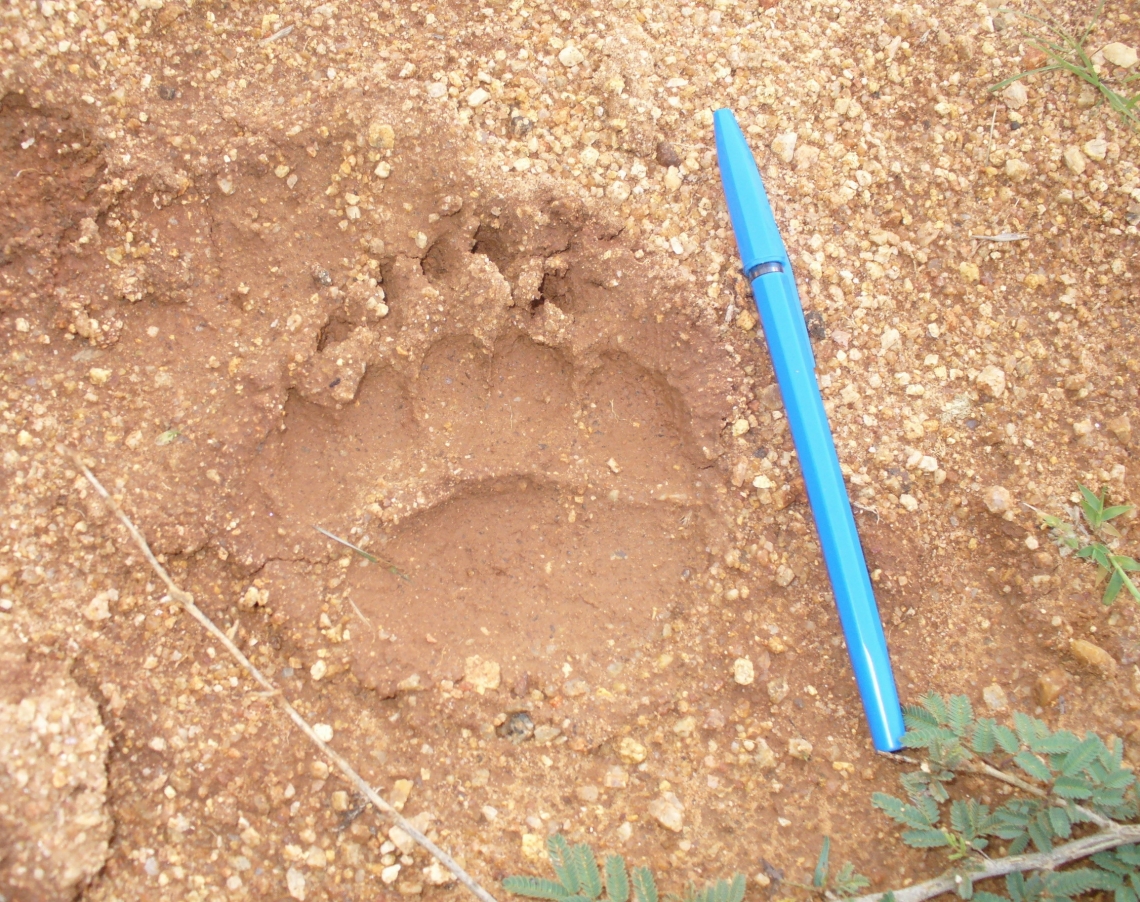
Sloth bear_M ursinus_Gujarat India_front pug mark_N Dharaiya

Sloth bear_M ursinus_Chitwan Nepal_missing incisors and large lips_D Garshelis
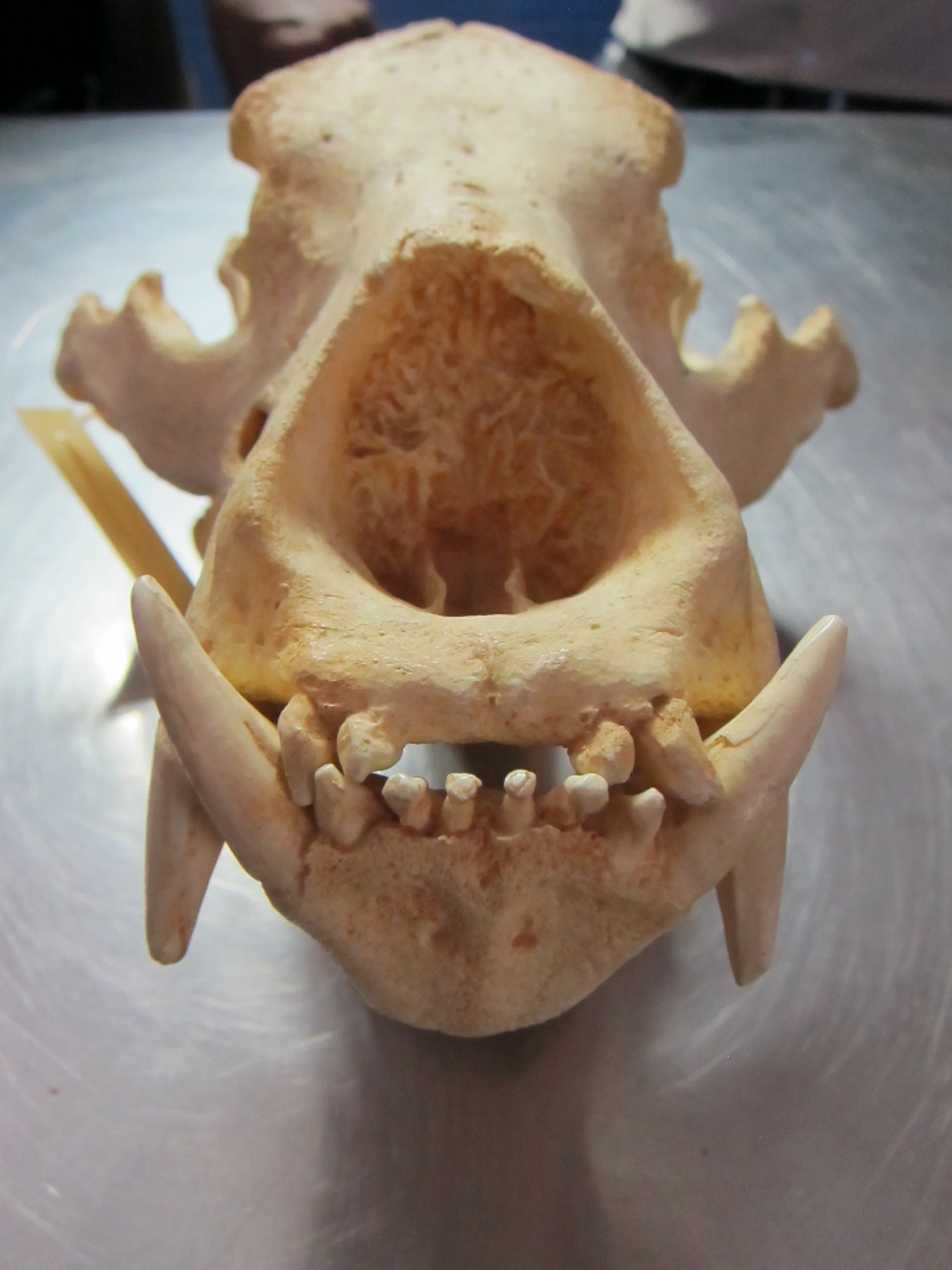
Sloth bear_M ursinus_skull showing missing two upper incisors_D Garshelis
Distinctive behaviors: Unlike other bears, which tend to be mainly diurnal except in the presence of humans, sloth bears are naturally more crepuscular and nocturnal, probably to avoid high temperatures, especially in rather open environments, and also possibly because termites are nocturnal. In many areas they are known to occupy caves or underground dens during the day, and emerge at dusk. This behavior, common in this species, occurs rarely among other bears (e.g., Asiatic black bears in Iran, where it is also hot). Camera traps set at the entrance of cave dens revealed that sloth bears may scent mark the den by grinding and twisting a foot into the ground.
Also unique compared to other bears, sloth bears routinely carry their cubs on their back, a likely behavioral adaptation to living in treeless habitat with large, formidable predators, namely tigers (and before tigers, a number of other large felids that are now extinct). Litters of two cubs can cling to the long hair of the mother, even when she is excavating a deep hole to feed on termites, running, going through thick brush, or even fighting off tigers. Anecdotal reports exist, though, of a third cub dropping off for lack of room on the back. Cubs will ride on the back of their mother until they reach 7–9 months old. Though somewhat poor climbers compared to Asiatic black bears or sun bears, sloth bears climb trees to attain food such as fruit or honeycomb. Often when coming down from a tree, these bears slide, leaving long, distinctive claw marks. They are experts at sniffing out termites, ants, and other social insects, even in colonies a meter underground, and they are proficient excavators.
Because sloth bears are so focused on detecting insects underground, tigers can often approach them closely without being detected. Being unable to escape a tiger at such close range, sloth bears typically stand and then rush the tiger, attempting to scare it away. While sometimes they are unsuccessful and become tiger prey, this strategy of explosive aggression seems necessary under the circumstances, given that trees are often sparse, they are poor tree climbers, and tigers can approach closely, undetected. This aggressive behavior carries over to the way sloth bears respond to humans at close range (and hence why they are so dangerous).
Although, like other bears, sloth bears are mainly solitary, pairs of bears are sometimes seen feeding near each other, and clearly tolerate such close company. Subadults also are known to stay together for extended periods, possibly as a defensive mechanism.
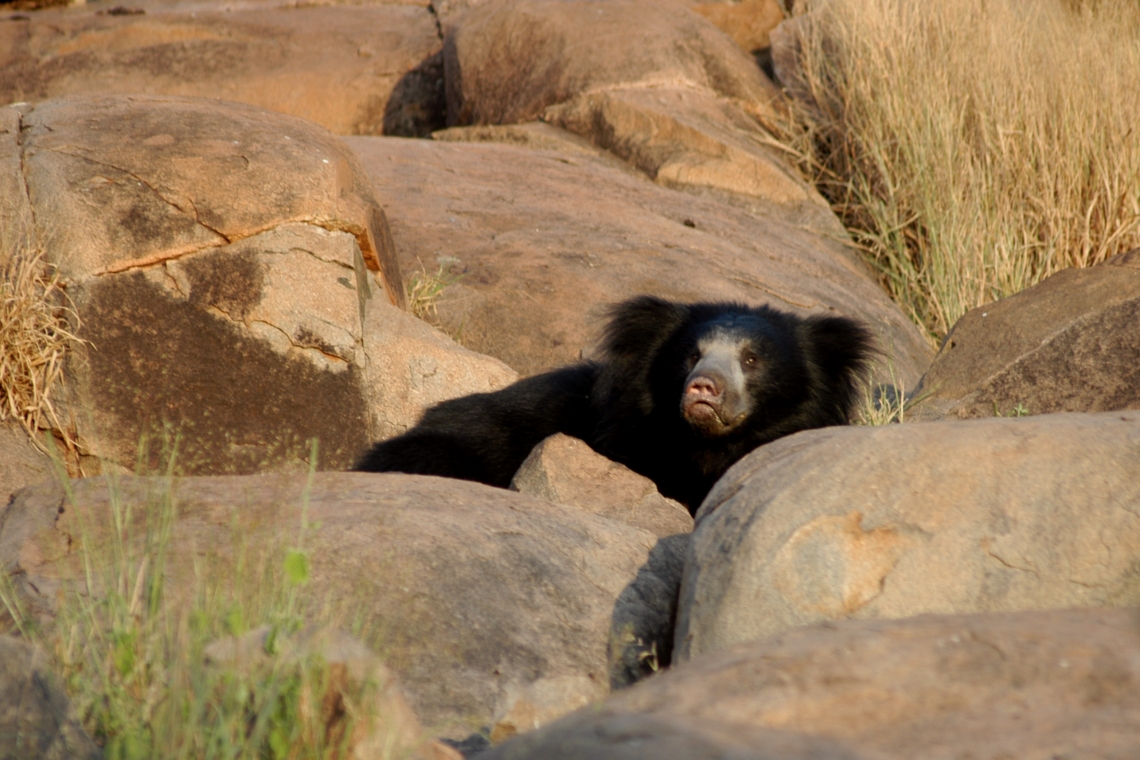
Sloth bear_ M ursinus_Daroji bear Sanctuary India_leaving den in boulder field_Thomas Sharp
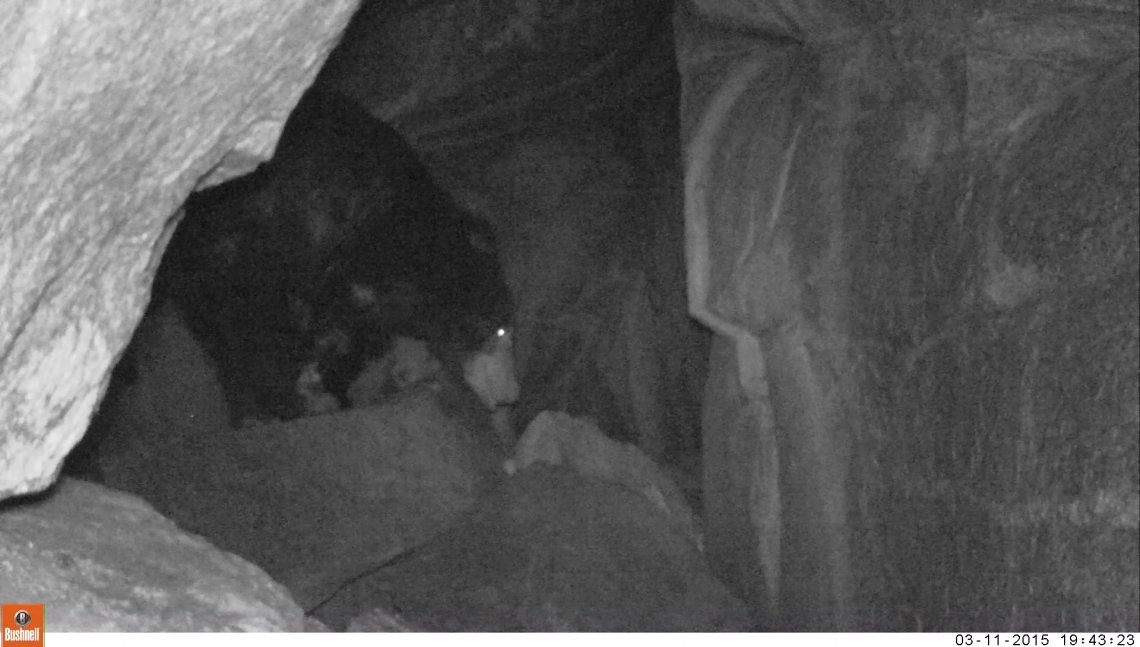
Sloth bear_M ursinus_Ramdurga India_male bear returning to a resting den_Wildlife SOS
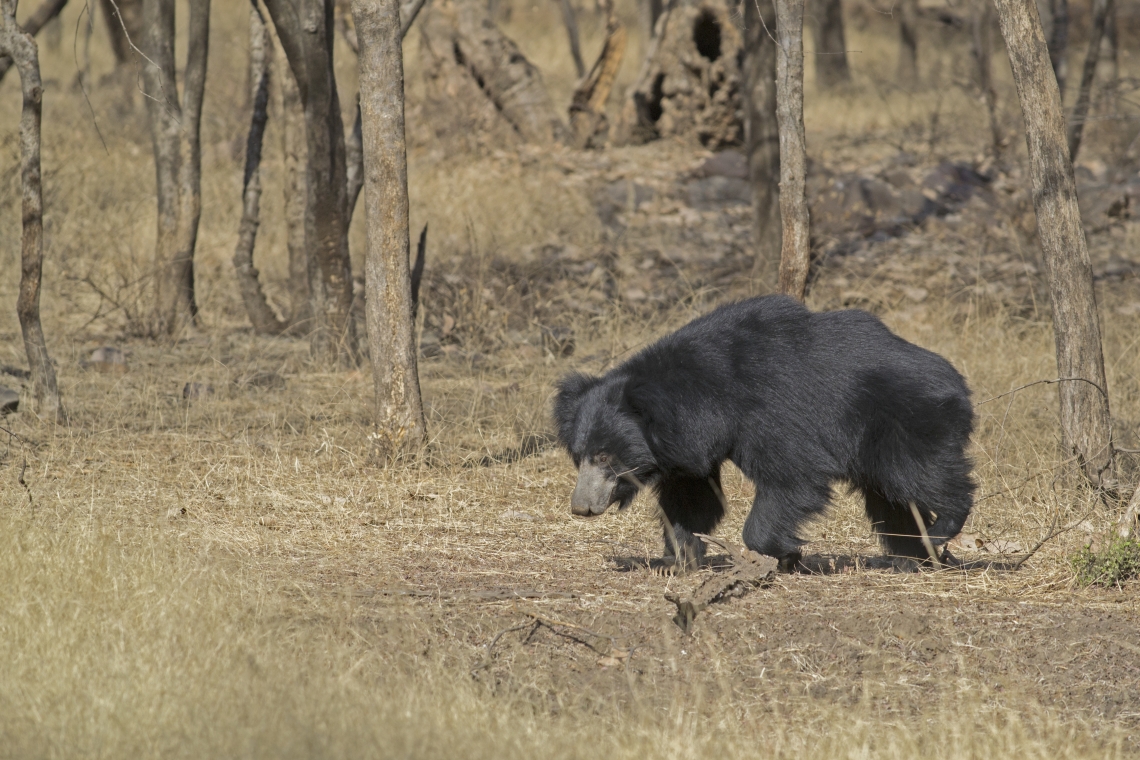
Sloth bear_M ursinus_Ranthambhore Rajasthan_Bear walking_Kaushal Patel

Sloth bear_M ursinus_Chitwan Nepal_sniffing ground for termites_D Garshelis

Sloth bear_M ursinus_Bannerghatta Bear Rescue Facility India_Standing near people_Thomas Sharp WSOS
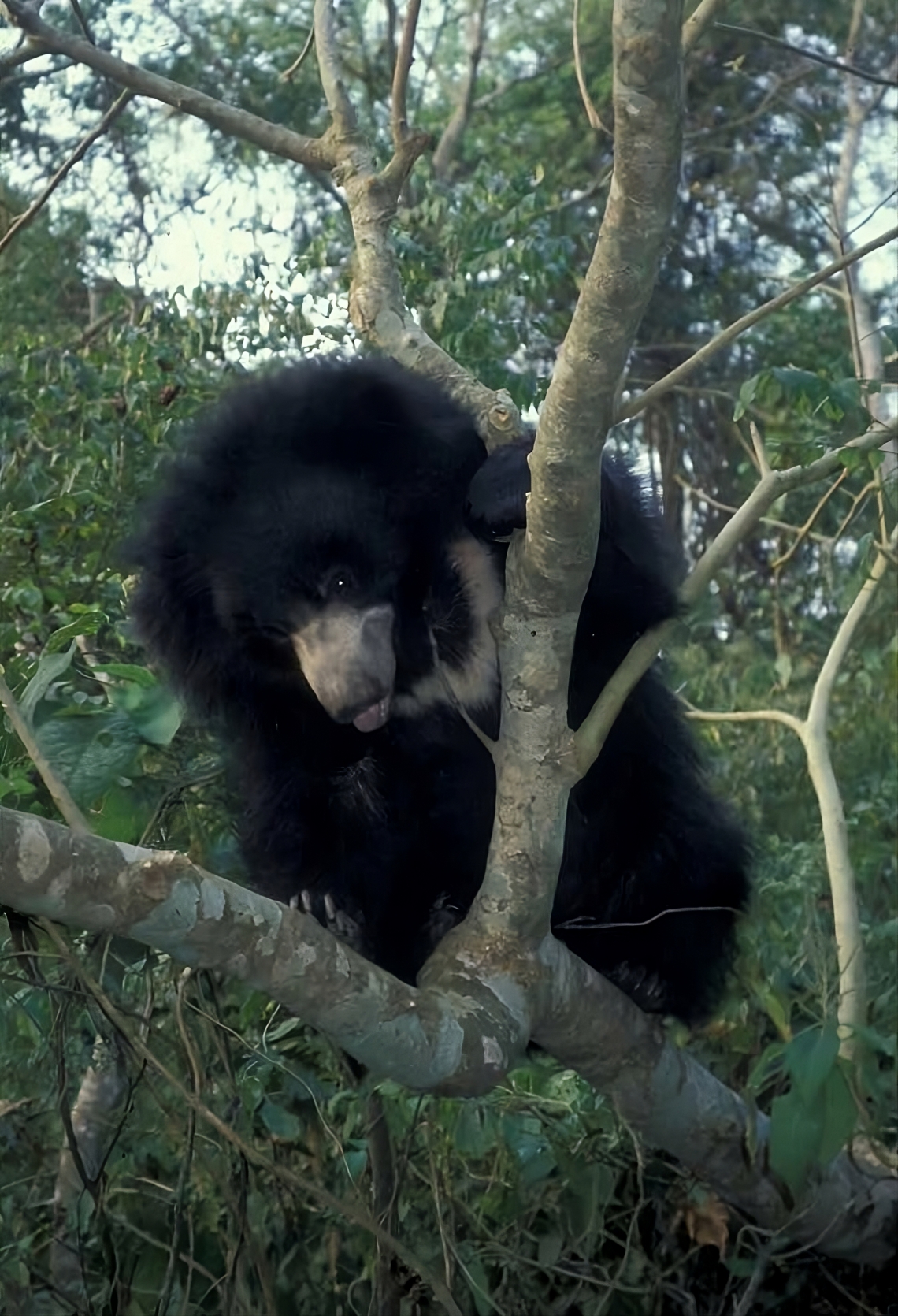
Sloth bear_M ursinus_Chitwan Nepal_tree climbing_D Garshelis

Sloth bear_M ursinus_Gujarat_claw mark sliding_N Dharaiya

Sloth bear_M ursinus_Gujarat India_sliding claw marks_ShaluM
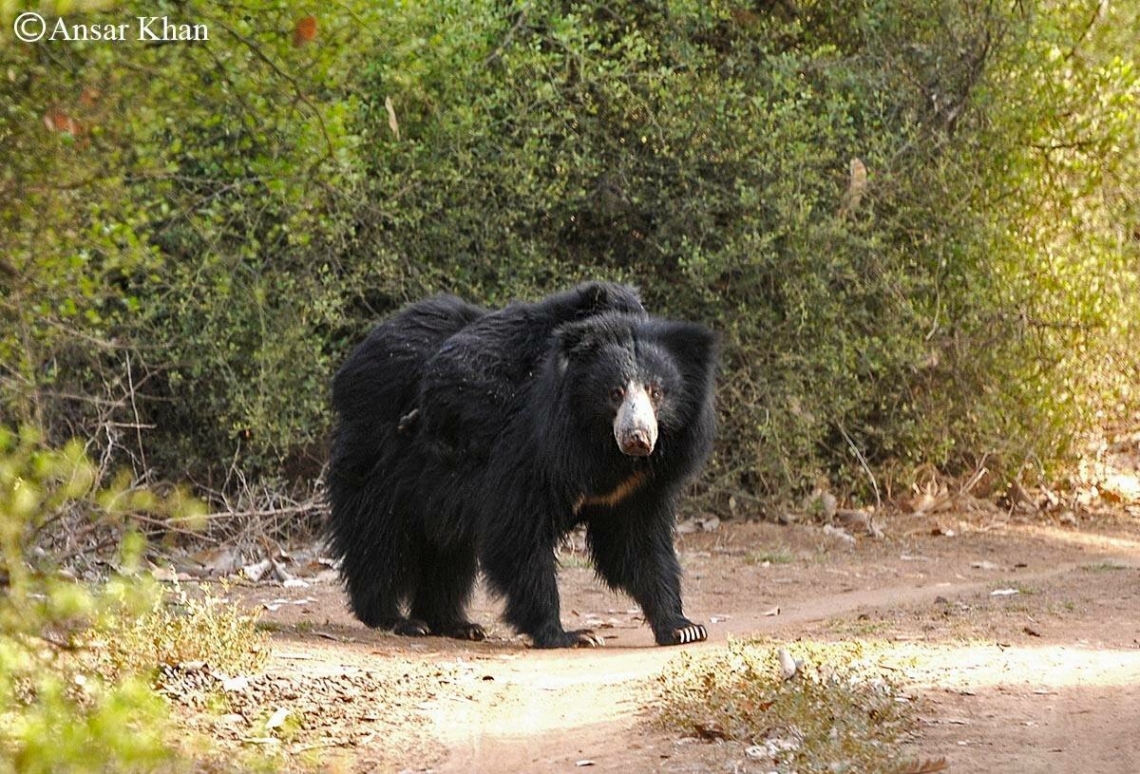
Sloth bear_M ursinus_Central India_Carrying cubs_Ansar Khan

Sloth bear_M ursinus_central India_Drinking at water hole_Bablu Khan
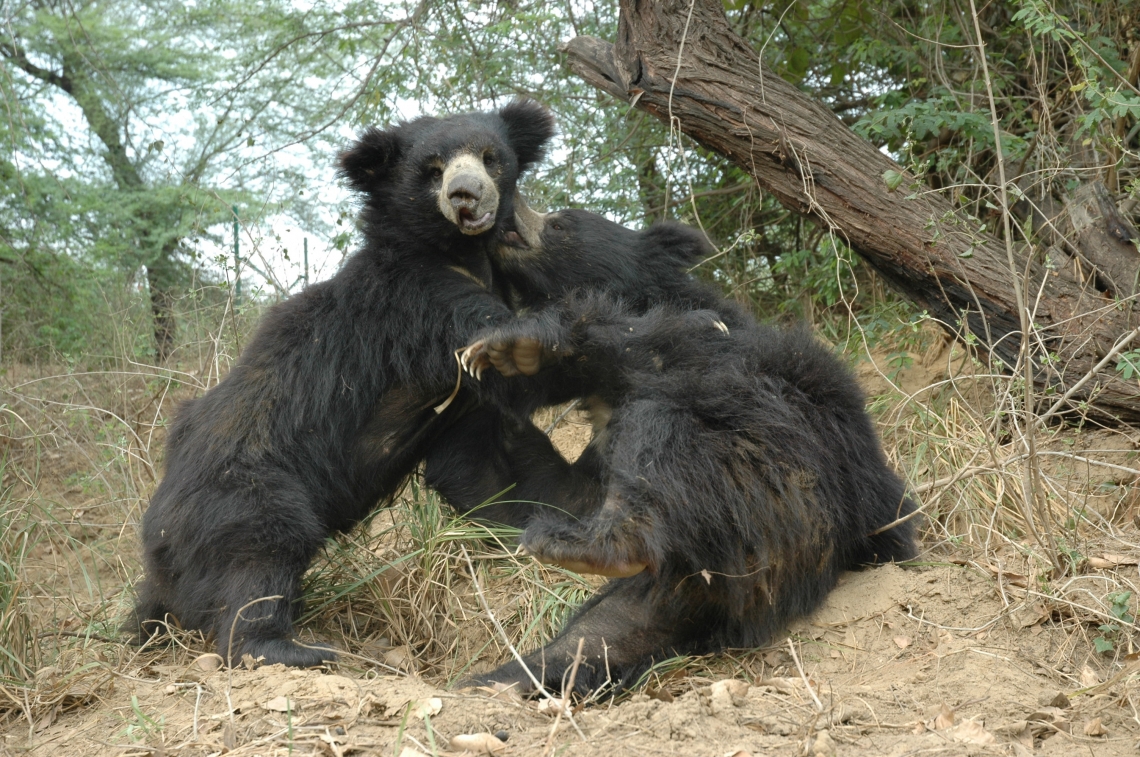
Sloth bear_M ursinus_WSOS Agra Bear Rescue Facility Agra India_Two bears playing_T Sharp WSOS
Sloth bear_M ursinus_Dudhwa_Searching for food_Saurabh Shukla